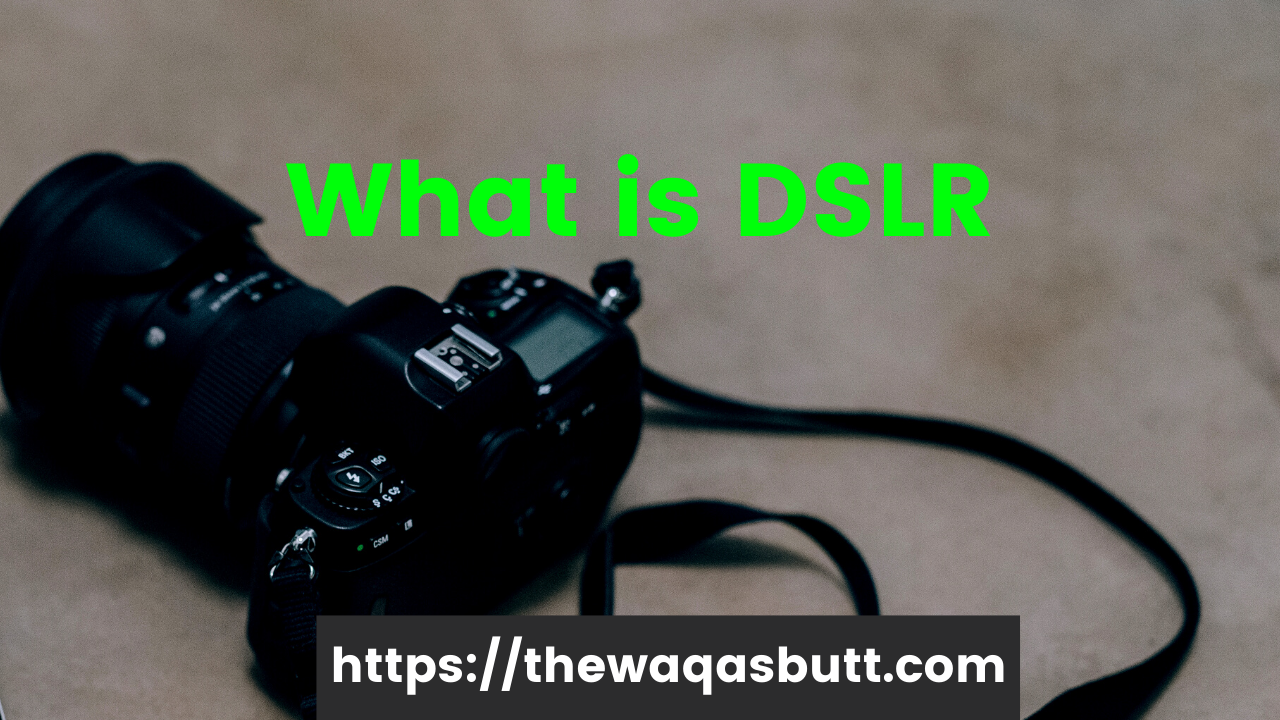What is DSLR Camera and How to use it?
What is a DSLR camera? In today’s modern age and fashion era, there is hardly anyone who does not love to take pictures. Although mobile cameras have given rise to selfies, DSLR cameras are still the first choice of people for royal photography. Only a DSLR camera is used in weddings, ceremonies, etc.
People must have used DSLR cameras but they don’t know about it well. They just know that a DSLR camera is useful for good photography but they don’t know how this camera works. What are the functions of this camera and how is it different from other digital cameras?
So, there are many new selfie phones these days, but the difference between the photos taken with a DSLR camera and the photos taken with a phone is night and day. DSLR features are different from smartphone cameras. In today’s post, we will know what is a DSLR camera, how it works, and what are its functions.
What is a DSLR camera?
A DSLR camera is a digital single-lens reflex camera that captures images and videos in digital format and records them with the help of an electronic image sensor. In this camera, you can view the photo immediately after taking it, delete it and replace it with a new photo.
Its lenses are also very advanced and very different from our film cameras. Its features make it unique. Its lens and advanced features help you take the best picture. Let’s know how DSLR camera parts work.
How do DSLR Cameras work?
When we look through the viewfinder/eyepiece of a DSLR, which is on the back of the camera, whatever scene we see in front of the lens means we’re going to capture all of those things. are what you see.
Light from this scene passes through your camera lens to the Reflex mirror. The camera is positioned at a 45-degree angle above the chamber, which then refracts the light vertically to an optical element called a “pentaprism.”
This pentaprism then transforms this vertical light into a horizontal one which directs the light into two separate mirrors in the viewfinder.
When you take a picture, the reflex mirror swings up, blocking the vertical path and letting light in. Then the shutter opens and the light reaches the image sensor.
The shutter remains open until the image sensor records the image, then the shutter closes and the reflex mirror returns to a 45-degree angle, which then allows light into the viewfinder.
- What is a digital camera?
- What is a GIF and how to download it?
- What is backlight compensation?
It’s fair to say that the streak doesn’t stop there. By the way, very complex image processing takes place in the camera. This camera processor takes the information from the image sensor, converts it into an appropriate format, then writes it to the memory card.
It takes very little time to do this whole process and some professional DSLRs can do more than that and more than 11 times within 1 second.
In just this simple language, I have given you the information about how DSLR works.
How does a modern DSLR work?
Modern DSLR cameras use ‘mirror’ mirrors and/or prisms to view and focus on the subject. When we look at an object through the viewfinder, it is with the help of a mirror and/or prism. For this, two small mirrors or mirrors are attached to the camera.
The light rays coming through the lens are first reflected by the mirror (mirror) and fall on the second mirror and then reach our eyes through the viewfinder. Inexpensive DSLR cameras, a pentaprism is used in place of a second mirror, which makes the object appear slightly wider.
What are the parts of a DSLR camera?
- Lens
- Reflex mirror
- Image sensor
- Condenser lens
- Eyepiece / Viewfinder
- Shutter
- Focusing screen
- Pentaprism
Everyone knows how to take pictures with a DSLR camera, but do you know how all its parts work? If not, let’s find out.
1: Lens
A DSLR camera has three lenses. The first “standard lens” is no longer used. These lenses were used in film cameras with a range of 50mm. These lenses were called standard lenses because they came with the first camera and you couldn’t make any adjustments to them.
Then came the “cut lens” now used in DSLR cameras. These lenses were designed for everyday shooting so that people can click pictures with them on a daily basis. The third lens is the “prime lens”, which has a fixed focal length, so they are also called fixed lenses.
Also, it has no option to zoom in or zoom out. Prime lenses are faster than zoom lenses. This is because they don’t have an extra glass inside to zoom (in or out). Along with this, it provides better quality images due to less contrast.
2: Reflex mirror
The part of the camera where the refraction of the image is seen. This is a very important part of the camera. This mirror is placed just behind the lens so that the light coming from the lens falls on it and is absorbed by it.
3: Shutter
This feature is found in all types of cameras. Its job is to control the light entering the camera. The faster the shutter is closed, the less light the image receives and the slower the shutter is closed, the more light the image receives. The image appears brighter with more light and darker with less light.
You have to use a combination of the two so that the image comes out best and well.
4: Image sensor
Once the shutter is closed, the image sensor captures the image. The bigger the sensor, the more detailed the image will be. If the image sensor is small, the image will be small and not clear in appearance.
A camera like DSLR uses a very large sensor due to which you get a very good and perfect picture.
5: Focusing the camera
It is a very important part of the DSLR camera. It can show you a preview of the image you’re about to capture. In this, you can check the image displayed in front of the viewfinder to see if the image is coming out correctly or not.
6: Condenser lens
It has 2 convex lenses and the design of these lenses only means that the light falling on the lens stays straight and follows the path.
7: Pentaprism
It is a five-cornered reflecting prism that bends any light by 90 degrees regardless of whether the light has entered the 90-degree prism or not. By doing this, the light falls directly on the image and the image comes out clean.
8: Eyepiece / ViewfinderEyepiece / Viewfinder
The part of the camera where you see the image is the viewfinder. It is like an LED glass in which you can see the picture you are going to take. The image can be well focused with the help of the viewfinder.
What is the difference between a mobile camera and a DSLR camera?
The difference between a mobile camera and a DSLR camera is the difference between a professional and a non-professional. The image sensor in DSLR is very large while in the mobile camera it is very small. The bigger the sensor, the better the image.
Having a high megapixel camera does nothing, the image quality depends on its sensor. A DSLR camera is fantastic in terms of photos.
A DSLR can focus much better than a mobile camera. Also, the battery life of a DSLR is much longer than a mobile camera.
People Also Ask
When did DSLR cameras come out?
At Photokina in 1986, the Japanese company Nikon revealed a prototype for the first DSLR camera, the Nikon SVC. In 1988, Nikon released the QV-1000C, the first commercial DSLR camera.
How much does a DSLR camera cost?
DSLR camera prices start from 60,000 PKR.
What is the full form of DSLR?
The full form of DSLR is ‘Digital Single Lens Reflex’.
Conclusion
I hope you liked my article What is DSLR Camera? It has always been my endeavor to provide readers with complete information on how to use a DSLR camera so that they don’t have to search for it on any other site or on the internet in the context of this article.
This will also save their time and they will also get all the information in one place. If you have any doubt about this article or want some improvement then you can write comments for it.
If you liked this post on what is DSLR or learned something then please share this post on social networks like Facebook, Twitter, etc.







